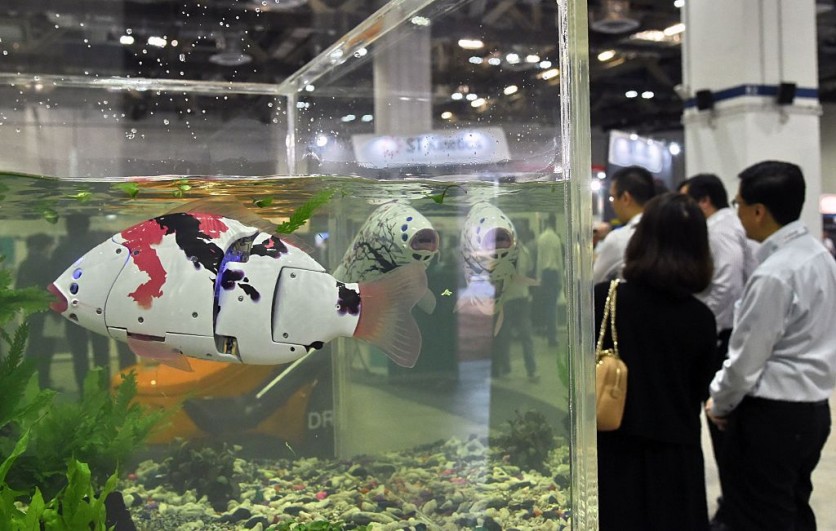A robot fish called "Robo-Fish" has been created after winning a robotics contest at the University of Surrey, as reported by Interesting Engineering.

The design of the robo-fish was focused on functionality and versatility. It has gills to filter water as it swims. Additionally, the robo-fish is as the size of a salmon.
The design was adapted from the fish's gills to create a filter for microplastics instead.
How it Works
The robo-fish moves through the water by flapping its tail while holding its mouth open to catch microplastics and water in an internal cavity. Once the cavity is full, it will close its mouth and open its gill flaps. Then it raises the cavity's floor to force the water out through the flaps.
The gill flaps are covered with a tiny mesh that allows water through but traps plastic debris.
Currently, the robot can capture particles as small as 2mm in size. It also has n Inertial Measuring Unit (IMU) that can track its movements in the water, plus built-in sensors that can assess turbidity and underwater light levels. The robo-fish illuminates at night as well.
Also, the existing prototype is dependent on the hardwired remote control. Future versions of the bot may be able to catch far smaller particles and may also include a faster, more hydrodynamic body shape, a stronger tail, and the capacity to swim on its own.
Eleanor Mackintosh, the contest winner, told New Atlas, "Water pollution, especially plastic pollution, is a huge problem. It's not just about the ocean which suffers but rivers, streams, lakes, and ponds. This makes it a problem without a one-size-fits-all solution."
Saving the Bodies of Water
Plastic pollution has largely been centered on the oceans, but the problem is a lot more widespread than just the oceans.
All bodies of water and even the soil are affected by microplastics. Microplastics are particles of plastic that measure 5 millimeters or less in diameter. They are created when the plastic debris breaks down into smaller and smaller pieces and have been accumulating in the water and soil for years. This can be a danger to the ecosystems because fish, animals, and humans can consume them.
Currently, there are 1,000 rivers around the world that have been found to have microplastics. The waterways also have several thousands of tons of plastic every year.
Robo-Fish is a novel solution to the problem of microplastic pollution, which is currently plaguing our waterways. It has the potential to find and remove microplastics from our lakes, rivers, and oceans.
The robot is still in its early stages of development, but people can already make an impact on the environment by reducing their plastic use by as small as possible. Also, by supporting the use of biodegradable products, people can help make a very big difference in our world.
Related article : Scientists Create A 'Robot Fish' That Eats Microplastics - Will It Solve Plastic Pollution?
This article is owned by Tech Times
Written by April Fowell
ⓒ 2025 TECHTIMES.com All rights reserved. Do not reproduce without permission.




